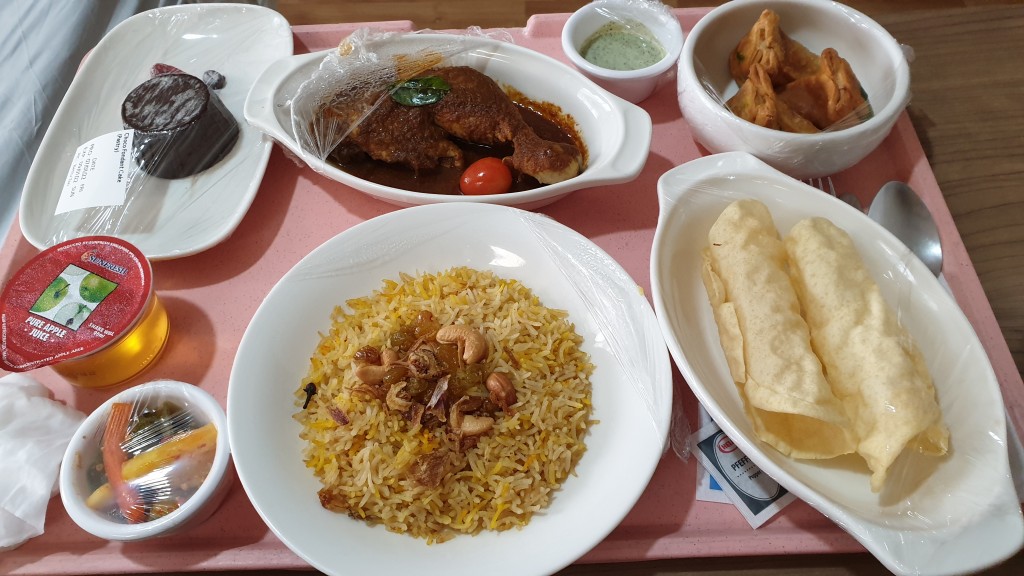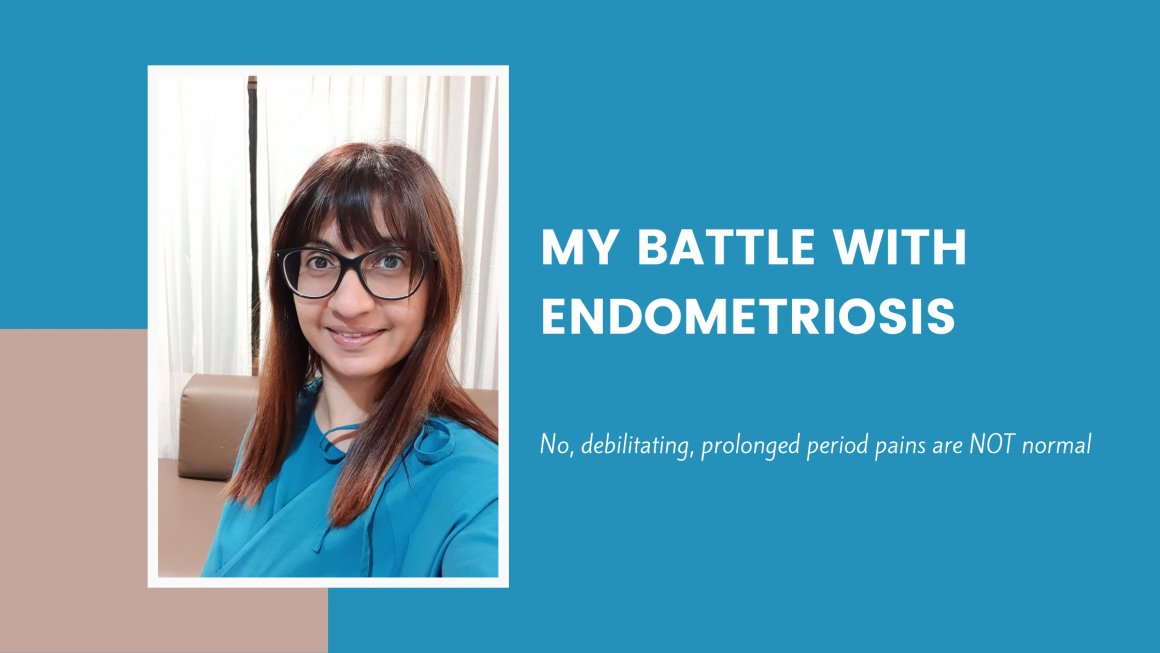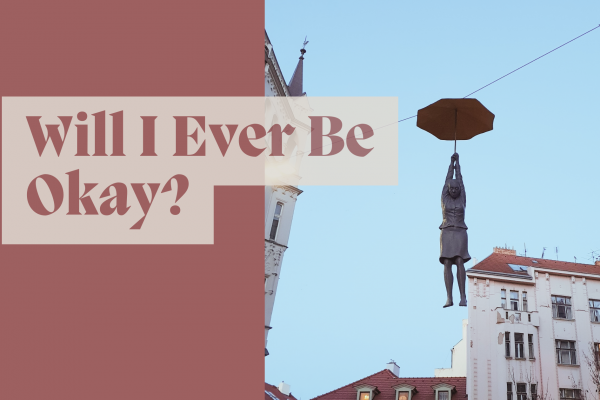Hello! This is not an overtly mental health related post (though there are mental health implications for those who suffer from this disease), but seeing as how I have had two big surgeries to deal with endometriosis in the span of 10 years, I thought I’d share my experience in regard to this normally not fatal but often very painful disease.
It was a little ironic that I was inspired to write this post as a result of my lounging around watching the Australian Open during my recovery. I happened to catch American Danielle Collins win the quarter-finals on Wednesday and during the post-match interview, it was mentioned that she had recently endured serious health concerns.
Whether I used The Force or the fact that they didn’t mention what the illness was, I had a feeling it was gynae-related so I googled and sure enough, this article popped up.



What timing, I thought. Here I am recovering from surgery from less than 4 weeks ago for the same illness. As I read on, I realised it is true. Endometriosis is not all that well-known like some other ailments that plague women.
Mention cysts, fibroids, polyps — and most people would know what they imply, even if one may not know the exact difference.
We know it means that there is something inside that should not be there.
But mention endometriosis, and the likely response is “what’s that?”
Interesting considering that endometriosis afflicts 1 in 10 women worldwide.
So I thought, maybe it’s time I shared my experience with this — after all, I’ve had endometriosis for so many years and have had two surgeries for it, so why not.
Ok. So, what is the meaning of this big word that I have to keep typing out in full for the rest of my article?
What is Endometriosis?
“Endometriosis is an often painful disorder in which tissue similar to the tissue that normally lines the inside of your uterus — the endometrium — grows outside your uterus. Endometriosis most commonly involves your ovaries, fallopian tubes and the tissue lining your pelvis…
…With endometriosis, the endometrial-like tissue acts as endometrial tissue would — it thickens, breaks down and bleeds with each menstrual cycle. But because this tissue has no way to exit your body, it becomes trapped… Surrounding tissue can become irritated, eventually developing scar tissue and adhesions — bands of fibrous tissue that can cause pelvic tissues and organs to stick to each other.” — Mayo Clinic
To translate: You know how the monthly menstrual cycle works? Your endometrial lining in the uterus thickens every month, getting ready to be plush and cushy for a potential embryo, but if you’re not pregnant, then this lining will shed via the vagina as your period.
So, same thing. Cells that are similar to this endometrial lining grow in the parts that are outside your uterus (tubes, ovaries etc), and every month, they shed as well BUT have no where to go. They shed within your pelvic cavity, with no vaginal route as an escape.
And this is the problem. As they shed, they form lesions and adhesions that can end up clumping your pelvic organs together. Imagine intestines wrapping around ovaries, or rectums super-glued to vaginas. Basically things down there are not moving as freely as they should be.
Symptoms and Implications of endometriosis may include:
- painful cramps that may begin and end days after your period
- chronic pelvic pain regardless of whether you are having your period
- excessive bleeding during periods or spotting between periods
- pain during and/or after sexual intercourse
- painful bowel movements and urination
- lower back pain
- abdominal bloating and nausea
- fatigue, depression, anxiety
- Infertility
Why does endometriosis happen?:
There are different theories concerning things like retrograde menstruation, hormonal and immunologic issues, post-surgical scar implantations etc. It’s quite theoretical so I’ve left some reference links below if you’re keen to read more.
On to my long-drawn out battle:
The earliest I remember was when I was in JC, so 17 or so. I would have super-heavy periods, and I remember a friend remarking that I was a vampire’s dream! Bawdy, indeed. As for the pain, I’d have bad cramps but only for a couple of days.
The pain slowly started getting worse. I remember once on the way to university, the MRT had reached Buona Vista, one stop before I was supposed to get off, and I was doubling over so much, I got off the train and called for someone to fetch me home. Or did I take a taxi back home? I can’t remember, that was around 25 years ago so facts are fuzzy.
Over the years, the intensity became so bad, I was literally on the verge of passing out whenever I woke up in the middle of the night to change. Which I’d have to do within the hour sometimes as the flow was heavy and in clumps, at times.
Around 15 years ago, I remember already having very bad cramps when I went to work. And when I entered the lift at my workplace, I suddenly doubled over, and started groaning from the pain — gosh, my ex-colleagues sure looked more frightened than I was!
As it turns out, my husband worked in the same company, and so my colleague called him, and I remember him saying: “Don’t worry, this happens every month”.
Waking up in the middle of the night, pain so unbearable, I’d be writhing in agony, and hubby would have to fetch me a hot water bottle and some hot milo for me to get even the slightest reprieve.
I also used to take pills to delay my period whenever I travelled so I didn’t have to deal with it.
But menstrual cramps are so normal, right?
I remember my ex-boss saying that I never took medical leave except sometimes for cramps. Yeah, I think many women can understand this because we feel that menstrual cramps are normal, some of us have it worse, that’s all.
And so, we shouldn’t bother with it, and we try hard to get to work and fight through it, and when we take medical leave for it, it feels as though we are just using it as an “excuse”.
Well, our pain is not normal – when the pain is so severe, that you can literally pass out.
In fact, according to the World Health Organisation, “In many countries, the general public and most front-line healthcare providers are not aware that distressing and life-altering pelvic pain is not normal, leading to a normalisation and stigmatisation of symptoms and significant diagnostic delay.”
Now, let’s talk about the persistent pain:
The above was the pain during my period. But, let’s talk about the persistent pain that happened every day.
That pain was more of a dull ache. Sometimes wave-like, something throbbing, always present. I went for many meetings at work enduring this pain, because it was dull, not sharp, it wouldn’t make me flinch suddenly, so it went by unnoticed by colleagues.
Sometimes though, the pain would be sharp, and as far as my understanding goes, this was probably because the endometriosis had caused my intestines to go awry, clumping away, so I’d get a kind of sharp pain like when you have gas / stomach pain.
Yikes, to think I had been dealing with this for decades, and never sought any treatment until when we started trying to conceive and it wasn’t happening for us.
Endometriosis and Infertility:
“Endometriosis is considered one of the three major causes of female infertility. According to the American Society for Reproductive Medicine, endometriosis can be found in 24 to 50 percent of women who experience infertility.” – John Hopkins Medicine
I got married when I was 31 and as a typical Type A, I had this mentality — work hard, work smart, things should fall into place, right?
Well, clearly not when it comes to our bodies! I had a target age of having kids when I was 35. After about 1.5 years, I finally saw a gynae and he suspected endometriosis. I saw 2 other gynaes and they concurred.
On that note, they could only suspect endometriosis from my symptoms, and from the pelvic ultrasound scan. My doctor for example, while doing the scan, noted that things were feeling “stuck”, not moving freely as normal.
Certain parts where the ultrasound wand pushed against, I would feel the sensation of wanting to poo, which was also noted. But, the only way to confirm the presence of endometriosis is to do a laparascopic surgery, at which time, the doctor can also work on resolving the issue.
Eventually, I went for my surgery in 2011. I still remember her saying that “mine was really severe.” The adhesions that formed were causing my abdominal/pelvic organs to clump and stick to each other. I don’t recall the details of which organs were stuck where, but I do recall her saying some of my organs in the pelvic cavity that were supposed to be at the back, were being weighed down and pulled forward to my front.
So what’s the connection with infertility? The reproductive environment can get impacted because of endometriosis. There’s the whole system where the ovaries, the tubes, the uterus all have to work in harmony, so when one or the other is impacted, complications arise that can cause infertility.
In fact, endometriosis is often discovered when there is an issue conceiving. Like in my case.
I did IVF one year after my endometriosis issues were resolved (I was 38) to give us a higher chance of success.
Unfortunately, it was not meant to be but I can happily say that my hubby and I have been maximising our enjoyment of a child-free life.
(When life gives you lemons, you make a Michelin-grade tarte au citron meringuée, no?)
What was the surgery like?
Warning: This is a long section with its share of TMI, so scan and see what catches your eye.
Pre-surgery:
Laparascopic surgery is minimally invasive. They make 3-4 small incisions — one in your navel through which the camera goes, and 2 or 3 others around your lower abdomen and pubic line for the operating instruments.
Hours before the surgery, you’ll have to stop eating and will have to clear your bowels completely. This involves one of the yuckiest things you have to drink – Fleet. It is literally like drinking pure saline. Gag.
The first surgery in 2011, I mixed it with cranberry juice. But take it from me, the recent surgery a few weeks back, I used ginger ale and it was better. Just down it! The nurses said Coke works too.
I was given an anti-nausea pill to take 30 mins before drinking this in case it made me feel sick. It didn’t, though.
Then you wait. 1.5 hours later or so… it starts!!! I think I spent the next 1.5 hours running to the loo, after a while, it’s like peeing from your anus! Massive amounts of water gushing out.
Graphic, I know, but I am all about the details 😊
For my recent surgery, it was a morning surgery at 8.30am. So, I had to take the Fleet at 8.30pm the night before. Luckily, I was done with the whole thing by 11pm, so I managed to get some sleep that night.
(So, if your surgery is in the AM too, it is worth having an early and light dinner and drinking this early enough in the night, so that you can be done with it for a decent night’s sleep.)
I had to be in hospital by 6am, and thanks to Covid-19 precautions, I had to take both the PCR and ART tests. Believe it or not, this is the first time I have ever done both (am a hermit, what can I say?)
About 2 hours before the surgery, I had to insert two pills into my vagina. That itself was a nervy thing for me, so I had been “practising” in the days leading up to D-Day. The pills are to get the cervix to dilate in prep for the operation.
The surgery is done under General Anaesthesia, and both times, because mine was more “complex”, it took over 3 hours.
Immediately after you wake up from surgery:
Both times, it was a 2-night stay in hospital. After the surgery, naturally I was still woozy, so everything was a blur. They transferred me to my room and it’s all a flurry of nurses hooking me up via IV to administer a variety of medicines including antibiotics and painkillers. And then you just lie prone for the next 24 hours.
The recent one, during the first day and night, they had a machine with compression socks on my legs, because of the immobility, there is a risk of dangerous clots forming. Each day, they jabbed anti blood clotting injection into my belly.
Because I couldn’t move till the second day, there was a catheter to help with the passing of urine into a bag by the bed.
I remember retching twice soon after I was conscious — nothing but spit came out. This can happen to some people because of the anaesthesia.
Naturally, you’ll still be bleeding from the vagina, so they put one of those old-school maxi cotton pads between your legs and they occasionally come along to clean you and replace it. Details again, I know.
(On that note, by the time you’re discharged, you can use your own preferred pads and underwear, but they told me they used the pads with loops that cannot be stuck onto your underwear because it’s pure cotton, not like the synthetics of the modern ones, so it’s better immediately post-surgery.)
By Day 2 in the late afternoon, they removed the IV and the catheter and I could go to the loo myself.
Each time, they would measure the amount of pee, so technically going to the loo meant peeing in a toilet-seat-shaped carton placed atop the toilet bowl.
The recovery:
My first surgery in 2011 had me in greater discomfort during recovery. I could not easily get up and down chairs and beds for the 1st few days. Switching sides while sleeping was difficult.
I had to rely on arm strength and the nurses taught me how to do it before I was discharged.
(The-then doctor said it was like someone stabbing you a 100 times in the abdomen, so you get the idea.)
Interestingly, for my second surgery, my recovery was 50% smoother, I’d say. Which is interesting because this time, not only was the surgery to remove the various endometrial implants, it was to remove both my fallopian tubes which had become inflamed over the years.
Yet, it wasn’t as uncomfortable moving around from day 3 onwards.
In fact, because the hospital offered a complimentary limo service back home, I told my husband to stay put and just meet me at our lobby. The hospital staff helped me with my carry bag, and into the car — never thought I’d come home myself after a major surgery but it goes to show how much less difficult this time round was.
I have no idea why, and because I had two different doctors for the two surgeries, I can’t get an answer from my current doctor. Could be the nature of the surgery, could be the doctor’s skill, I cannot say.
The first few days back home:
I didn’t take pictures of my incisions, but they are small and covered with waterproof bandages that look like large handiplasts. I could shower within a couple days after surgery, just had to be mindful not to spray water directly on the incision areas, had to keep the area as dry as possible.
To be extra careful, I wrapped cling wrap around my abdomen, because during the 1st week, you really don’t want any risk of infection of the wounds.
For all the big surgery that was done, upon discharge, would you believe that the painkiller given was just good, old paracetamol? Panadol, essentially.
I was also given a stronger painkiller (tramadol) which I took only for the first few nights, just in case. But frankly, my headaches were worse than any pain from the incisions or internally.
In fact, my head and shoulder aches, coupled with my overall sense of drowsiness meant I could only watch TV for about 15 minutes before dozing off. Which was a good thing because it forced me to rest.
The aches abated after a few days, but of course, the discomfort in the navel region remained (albeit minor) for a couple of weeks.
One week post surgery, there will be a doctor’s visit to remove the stitches. My first time in 2011, it was a little painful, I remember it was the nurse then who was doing it, there was some tugging involved. Second time round, with my new doctor, I didn’t feel anything. He did it himself and must have been his amazingly gentle touch.
Post-surgery Diet:
As for the diet? My doctor said I could eat anything I wanted. In fact, on my second day in hospital, once they were satisfied that I was able to retain liquids, they opened up the fantastic menu selection. I could have had anything from Burgers to Biryani if I wanted!
But my appetite was not there, so I ordered with caution — my second night dinner was a Steamed Cod with Abalone Soup (indulgent still, no?). And breakfast on my discharge day, I ordered Lobster Porridge (I know, what a hospital!), but because I had not slept much the previous two nights, I was feeling nauseous and couldn’t even touch the lobster. Me, wasting lobster? Impossible, but true.



The only change I made at home was to eat more fruit, to start encouraging my hibernating intestines to wake up. I had my first poo 4 days after coming home. Again with the details! But I thought it’s important to share in case anyone starts getting worried that the intestines have been impacted by the surgery and that’s why there’s no movement there.
In fact, doctors will ask if you’ve pooed, although obviously it will take days (because you’d have cleared the bowels pre-surgery and barely eaten the first couple of days, so nothing to clear). The surgery is being performed in the vicinity of the intestines, so doctors have to be so careful not to nick them during the surgery and therefore, monitoring the ability to pass motion is important.
By week 4 now, I am feeling 90% already. Minor, occasional discomfort around the incision area, a little easily tired but overall, ok. I’d consider it a 100% when I can start exercising again, which will be two months from surgery.
Does endometriosis come back?
I was already told after my first surgery that endometriosis can recur. After this second surgery, I asked my new doctor and he told me it can happen to around 20% of women where you may need a second surgery. So I guess I’m the “exclusive select few”.
For many, depending on when you had your first diagnosis and surgery, if you’re on your way to menopause, then it’s not a big concern.
(Essentially when you menopause, the impact of endometriosis, the monthly “bleeding” behaviour no longer is in play.)
In my case though, the first few years post surgery in 2011, I guess things were back to normal.
Stranger things were happening down there…
However, around 5 years later, I started noticing a very weird symptom. Colourless, thin, watery discharge. Which eventually became light brown watery discharge. Especially in the 2 weeks leading up to the next period.
Then another weird symptom. I started feeling a sensation of something being there in my left pelvic area. Like when bending over to tie shoelaces, I felt it. Or when lifting my left leg up towards my chest.
(It’s different from feeling pain, in fact, post-surgery, my cramps had mostly dissipated.)
So, what did I do with all these things? Well, I did see my doctor in 2017, 6 years post the first surgery, and she mentioned even then, that I’d need to do another surgery.
But I kept delaying, I’m just not one to react quickly to medical matters, so I left it at that.
But then, came another and, my strangest, symptom. When I slept on my left, even for 10 minutes, and turned to my right, I would feel this really uncomfortable pain, like my lower abdominal area was being pulled and cramped — and this feeling would stay for around 10 minutes while I rested on my right.
I had no issue turning from right to left, so it was definitely weird.
And the previous symptoms I had were getting worse as well. So eventually, in April 2020, I confirmed my appointment for a check-up, but that was also when Covid-19 started taking a hold on the world, and (most likely using it as an excuse), I cancelled my appointment.
Even Omicron ain’t gonna stop me now…
Nearly 2 years later, I finally went for my surgery, on 5th Jan this year. (I almost used Omicron as an excuse but, I decided to bite the bullet and just do it.)
This time round, not only did the doctor deal with the endometriosis, he also removed both fallopian tubes, as they were inflamed because of the endometriosis. This was the likely reason for those discharges I was having. Again, my endometriosis was severe because once again, organs were being stuck together (uterus to the rectum, for one) and there were deep infiltrations.
Read: Stages of Endometriosis.
It was also during the course of the surgery, and blood tests, that doc saw that I am perimenopausal. Which I am thrilled about because 1) it’s good from an endometriosis POV 2) who really wants to get periods if you’re no longer keen on conception, right?
My periods were already irregular for the past year or so, I’ve had some hot flushes along the way, so I already knew things were changing.
After all, that how am I now?
It’s less than four weeks since the surgery, and while I was delaying and hesitant about having surgery #2, I am glad it’s done. I don’t have that weird pain when turning from left to right in bed. I don’t feel that strange something in my lower left abdomen / pelvic area, and my recovery has been relatively smooth.
So when should you even bother to find out if you have endometriosis:
I asked the doc this during my follow up. I knew that I have had very bad period pains since I was a teen, and I have always wondered, if I had sought treatment earlier, would I have been successful in conceiving?
So I asked the doc if he saw teenaged girls and while he affirmed that, he also mentioned that he takes a very conservative approach at that age because as mentioned earlier, the only way you can diagnose endometriosis is via surgery.
Hence, before jumping into that invasive option, monitoring is important. What he looks for are things like increasing intensity of pain and length of duration, how it is impacting the quality of life, is the pain only during a period or before and after as well and so on.
Basically, not every teen who experiences period pain needs to undergo an invasive procedure immediately.
Just note if the symptoms are getting worse and longer in duration. As you saw from my lengthy example earlier where you could say I waited till the very last minute (don’t use me as an example though, as infertility ensued).
Of course, if you’re in your 20s / 30s, and you’ve been having worsening symptoms or if you’ve been trying unsuccessfully to conceive for 6 months, you are advised to see a doctor. It does not mean you have endometriosis, though. There are many reasons for difficulties conceiving, including hormone levels, sperm counts etc.
A note about Gynaes, and how lucky I am to have found mine:
If anyone is in the same shoes as me, I have no qualms recommending my current doctor (who was recommended to me by another “endometriosis” friend when my former doctor stopped practising last year). Dr Loh Foo Hoe is one of the most patient doctors I have ever met, with the gentlest hands and demeanour. Very important when gynae exams are so invasive and uncomfortable, especially for us who suffer from endometriosis!
A note: Pre-surgery, I found trans-vaginal pelvic scans and digital exams to be very painful. Last week, he did a post-surgery examination and it was not as painful. So ladies who find this process painful, it is a real thing! I had a nasty female gynae once who actually asked me “is it that bad?” in a condescending tone when she was sticking things down there. Yes, it was, you twat.
Also, I don’t know about you, but my experience with male gynaes (seen a few gynaes because I was getting 2nd, 3rd opinions 10 years ago) is that they seem to be more gentle. Maybe it’s because women doctors are women, and I suppose they themselves would have been poked and prodded down there, so maybe they think “oh, what’s the big deal, you are a woman, like me, you should be able to handle this.” I’m not dissing all female gynaes (I know there are thousands of gentle and brilliant female gynaes around, just my very limited personal experience and opinion, okay?)
I only bring up this point about male gynaes because of two reasons: 1) Some women I know have expressed hesitancy about seeing male gynaes and I would like them to know that the most important is to find someone whose competency you trust and with whom you are comfortable, regardless of gender and 2) A friend’s husband’s shock when he found out that my gynae is male. He said he wouldn’t be happy if it were a male doctor seeing his wife.
Anyway, back to Dr Loh: Asides from his very kind bedside manner, endometriosis is his area of special interest. He is well-recognised in this field and you can read more on the clinic’s website. And his nurses are so friendly and kind, which really makes the visits comfortable, all said.
Well, I hope this lengthy article has shed (no pun intended) some light into this whole endometriosis business.
Feel free to shout out below if you have any comments / questions!
References:
https://www.who.int/news-room/fact-sheets/detail/endometriosis
https://www.hopkinsmedicine.org/health/conditions-and-diseases/endometriosishttps://www.advancedgynaecologymelbourne.com.au/endometriosis/causes
https://www.advancedgynaecologymelbourne.com.au/endometriosis/causes






I love the details in your sharing. Thanks a lot for the sharing.
Thank you and I am glad you found it to be a good read 🙂